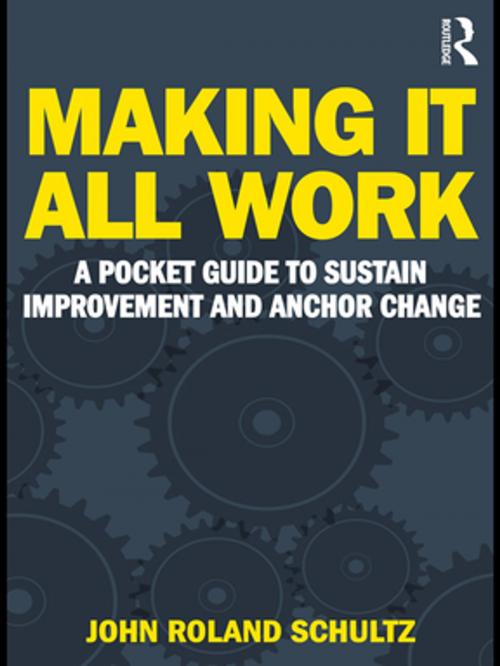Making It All Work
A Pocket Guide to Sustain Improvement And Anchor Change
Business & Finance, Industries & Professions, Total Quality Management, Quality Control| Author: | John R Schultz | ISBN: | 9781136939433 |
| Publisher: | Taylor and Francis | Publication: | September 13, 2010 |
| Imprint: | Routledge | Language: | English |
| Author: | John R Schultz |
| ISBN: | 9781136939433 |
| Publisher: | Taylor and Francis |
| Publication: | September 13, 2010 |
| Imprint: | Routledge |
| Language: | English |
This book explains how to organize and manage modifications during the solution realization phase of problem solving so improvements become the new way of life. The nine steps detailed in the books chapters, although applied to solution implementation, can be used on their own to manage many types of system modification. These transition activities are framed in a three stage model first proposed by Kurt Lewin the father of change theory. It packages a strategy for sustaining improvements that is easy to understand and apply – unfreeze, change, and refreeze.
Fundamental organizational performance techniques are introduced during each step to assist in managing the transformation from idea to integrated solution. These practices are not new or revolutionary, but often overlooked while team members focus on statistical and analytical means The described methods have a decidedly human focus and are meant to supplement the familiar diagnostic tools associated with six-sigma and process improvement projects.
This book explains how to organize and manage modifications during the solution realization phase of problem solving so improvements become the new way of life. The nine steps detailed in the books chapters, although applied to solution implementation, can be used on their own to manage many types of system modification. These transition activities are framed in a three stage model first proposed by Kurt Lewin the father of change theory. It packages a strategy for sustaining improvements that is easy to understand and apply – unfreeze, change, and refreeze.
Fundamental organizational performance techniques are introduced during each step to assist in managing the transformation from idea to integrated solution. These practices are not new or revolutionary, but often overlooked while team members focus on statistical and analytical means The described methods have a decidedly human focus and are meant to supplement the familiar diagnostic tools associated with six-sigma and process improvement projects.















